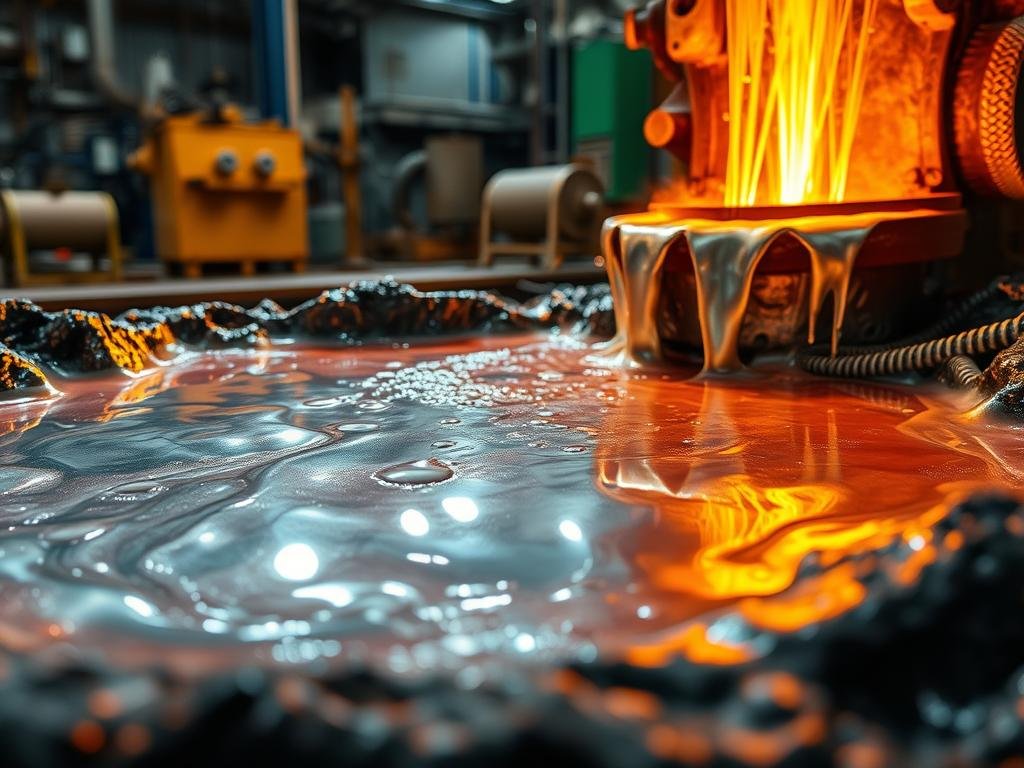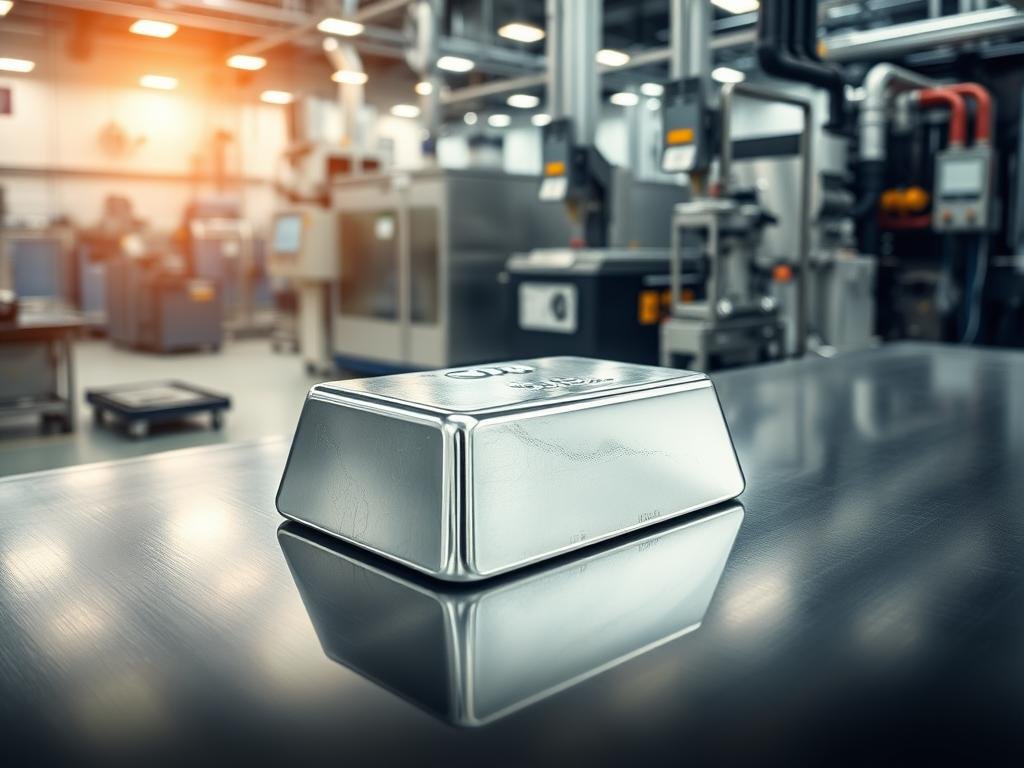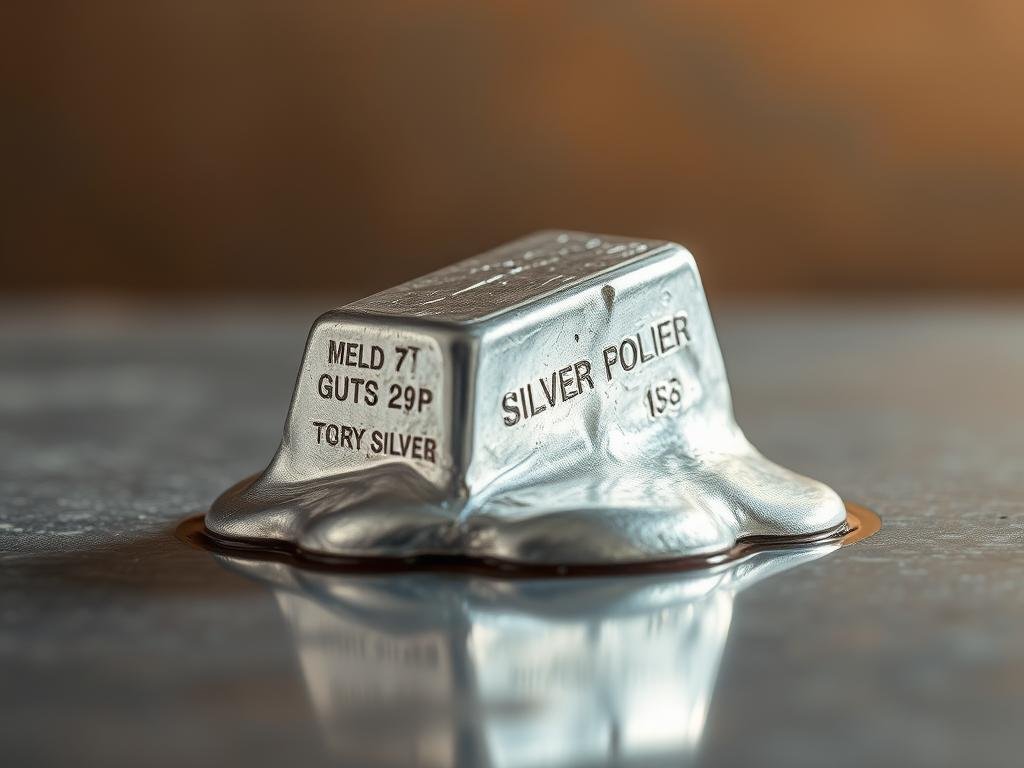More than one ton of silver will liquefy at a single industrial furnace temperature: pure silver melts at 961.8°C (1,763.2°F), a scale that shapes casting, alloys, and quality control across industries.
This short guide sets clear expectations about whats is the silver melting point and why it matters for engineers, buyers, and product teams that need dependable manufacturability.
We use 961.8°C as a baseline to compare alloys and process windows. That baseline guides tooling, thermal control, and downstream finishing. Those choices affect accuracy and surface finish in CNC-produced parts.
With Rapidaccu’s 15+ years in CNC machining, we translate melting data into practical decisions from prototype to mass production. You can read more on melting and boiling values and comparisons with gold and other metals at melting and boiling values.
Silver Melting Point at a Glance: Exact Temperatures and Why They Matter
Knowing exact temperatures keeps production predictable from melt to finished part. Use clear numeric baselines to control flow, cooling, and final finish.
Key numerical reference
Pure metal melts at 961.8°C (1,763.2°F; 1234.93 K). That melting point 961.8 serves as the reference for process windows and thermal recipes.
Wide liquid range and handling
The boiling point sits at 2,162°C (3,924°F), giving a broad liquid span. This gap aids stable flow and predictable timing before vaporization becomes an issue.
Manufacturing impact
Precise control of melting temperature reduces defects such as shrinkage porosity and oxide inclusions. Consistent furnace calibration and reliable thermocouples help hit targets and repeat material behavior.
| Property | Value | Manufacturing effect |
|---|---|---|
| Melting reference | 961.8°C / 1234.93 K | Defines gating, fill time, and cooling curves |
| Boiling | 2,162°C | Wide liquid window; low vapor risk during casting |
| Adjacent metals | Gold & copper higher | Affects joining strategy and assembly heat cycles |
Rapidaccu applies this thermal data to CNC workflows so parts hold tolerances and require less post-processing.
Whats is the silver melting point in different alloys?
Alloy choices change how and when metal flows during casting, so grade selection matters early in the process.
Sterling silver (925) typically melts near 893–900°C. Adding copper and other elements lowers melting temperature compared to pure metal, which improves castability and makes joining easier.
Sterling, Britannia, Argentium benchmarks
Britannia (958) melts around 940°C, while Argentium (935) sits near 930°C. Small composition shifts adjust melting point and affect cooling windows for parts.
Low‑temperature solders
Silver solders with about 15% silver and the rest copper/zinc melt at roughly 600–650°C. These alloys let assemblers join components without overheating nearby features.
- Lower melting alloys shorten melt times and cut energy use.
- Alloy choice influences microstructure, machinability, and surface finish after casting and CNC work.
- Consider corrosion resistance and post‑processing, not only melting convenience.
| Grade | Typical temp | Manufacturing note |
|---|---|---|
| Sterling 925 | 893–900°C | Better fluidity; copper affects hardness |
| Argentium 935 | ~930°C | Improved tarnish resistance; stable casting |
| Low‑temp solder | 600–650°C | Safe joining for assemblies |
Rapidaccu helps select grades to match tolerance, finish, and performance goals across prototypes and production.
From Solid to Molten Silver: Key Factors That Shift Melting Temperature
Small changes in composition or process can shift the fusion threshold noticeably in production runs.
Purity, alloying, and atomic bonding
Purity controls how atoms bond and how heat moves through a piece. Trace elements and intentional alloying alter bonding and shift melting temperature.
That change affects flow, viscosity, and final mechanical response.
Pressure, isotopes, and crystal defects
Pressure and isotopic mix can fine-tune the melting point in lab or high-spec parts. Defects and grain size at the atoms level also change how and when material yields.
Heating rate and environment
Fast ramp rates can delay uniform melt and increase thermal gradients in larger size batches. Atmosphere, humidity, and flux choice affect oxidation and inclusions.
- Control of purity and alloying gives predictable temperature silver behavior.
- Accurate thermocouple placement captures true melt points in production.
- Inert gas or vacuum yields cleaner melts and better downstream machining.
| Factor | Effect | Manufacturing action |
|---|---|---|
| Purity / alloying | Shifts melting temperature and hardness | Choose grade to match finish and machinability |
| Defects / grain size | Alters onset of flow and viscosity | Control heat treatment and cooling rates |
| Environment / heating rate | Impacts oxidation and thermal gradients | Use fluxes, inert gas, and ramp profiles |
Rapidaccu engineers balance these factors to hold tolerances and deliver CNC-ready blanks with consistent surface finish.
Melting vs. Smelting: Processes, Equipment, and Safety
Casting requires controlled liquefaction, while smelting removes impurities through chemical reactions at very high heat. One process prepares feedstock for shaping; the other refines ores into usable metal and slag.

Melting for casting vs. ore smelting
Melting silver converts ingots or scrap into liquid for molds and pour casting. Smelting targets ore, using fluxes and higher heat to separate contaminants into slag.
Furnaces, crucibles, tongs, and PPE
Choose a furnace matched to batch size. Use refractory crucibles and long tongs to handle molten silver safely.
Always wear goggles, heat‑resistant gloves, apron, and a face shield. Keep the workspace free of flammables—many materials ignite above 300°C.
Induction and electric systems
Benchtop induction or resistance units take roughly 10–45 minutes to melt up to ~1 kg. Higher‑power 5–12 kW systems can melt 2–8 kg in about 5–10 minutes, cutting energy per kilogram and improving homogeneity.
- Correct heat input and monitored profiles reduce oxidation and dross.
- Understanding boiling point margins keeps flowability while avoiding vapor risks.
- Do not casually melt silver coins without checking local rules on legal tender.
| Process | Typical equipment | Manufacturing note |
|---|---|---|
| Casting melt | Induction furnace, crucible, tongs | Optimized for clean pour stock and CNC readiness |
| Smelting | High‑temp furnace, flux, off‑gas control | Removes impurities; creates slag |
| Benchtop vs industrial | Small melter vs multi‑kW lift‑and‑pour | Tradeoffs: speed, energy, batch scale |
Rapidaccu prioritizes safety and consistent incoming material. Properly prepared cast inputs reduce tool wear and improve surface finish during precision CNC work.
Silver in Context: Comparing Melting Points with Other Metals
Positioning silver among common industrial metals helps teams choose joining methods and thermal sequences. This view supports predictable assemblies and clearer DFM choices.
Higher than aluminum and lead, lower than copper and gold
At 961.8°C, silver sits above aluminum (660.3°C) and lead (327.5°C). It falls below copper (1,084°C) and gold (1,064°C).
Iron (1,538°C), titanium (1,668°C), and platinum (1,768°C) are much hotter. That ranking matters when parts share heat or contact during processing.
- Place silver’s temperature within a metals lineup to plan joint strategies and thermal sequencing.
- Higher copper and gold temps influence welding, brazing, and filler choices for mixed assemblies.
- Lower-melting constituents drive final heat limits and set safe heat‑treatment windows.
- Fixture selection, preheat, and controlled cool rates reduce distortion in mixed‑metal builds.
| Metal | Melting temp (°C) | Manufacturing impact |
|---|---|---|
| Aluminum | 660.3 | Low heat; watch for softening and fast cycles |
| Lead | 327.5 | Very low temp; avoid overheating nearby parts |
| Silver | 961.8 | Intermediate; good balance of flow and thermal tolerance |
| Copper / Gold | 1,084 / 1,064 | Higher energy; affects brazing and filler selection |
Understanding these relationships reduces defects and improves tolerance planning during CNC finishing. Early collaboration with Rapidaccu aligns material choice, fixturing, and cycle times for reliable, cross-metal assemblies.
Applications of Melting Silver in Industry and Manufacturing
Accurate thermal control during casting yields parts that hold tight tolerances after CNC finishing. That control underpins common applications across jewelry, electronics, and precision components.

Jewelry, electronics, and precision components
Controlled melts produce fine jewelry with delicate filigree and consistent surface finish. Repeatable runs cut post‑process polishing time and reduce scrap.
In electronics, reliable conductivity depends on alloy integrity. Melting and joining steps form robust contacts and plated features for sensors and connectors.
Precision components benefit from cast blanks that match intended geometry. Stable pours reduce porosity and allow CNC to hit dimensional goals faster.
How temperature control supports alloy integrity and part performance
Maintaining a steady pour temperature preserves composition and strength. That keeps conductivity and wear resistance within spec for end use.
Alloying with copper or other additives tunes hardness and tarnish resistance. Careful preheat, pour, and cool cycles limit internal stress and improve machinability.
| Application | Key control | Outcome |
|---|---|---|
| Fine jewelry | Precise pour temp and slow cool | Consistent finish and less rework |
| Electronics contacts | Stable composition, clean joins | Reliable conductivity and longevity |
| Precision parts | Thermal planning by size and geometry | Tight tolerances and reduced distortion |
| Alloy tuning | Controlled alloying with copper | Optimized hardness and castability |
Process controls—preheat profiles, pour temperatures, and cooling rates—help parts resist warpage and sink. Monitoring melt and point keeps material within spec and lowers downstream scrap.
Rapidaccu integrates reliable cast inputs and strict thermal control from prototype to mass production. For more on temperature baselines, see a concise reference on what is the melting point.
How Rapidaccu Applies Silver’s Thermal Properties to CNC Precision
Rapidaccu turns thermal data into machining rules that protect tolerances and finish on delicate parts. With 15+ years of CNC experience, we align alloy choice, furnace practice, and CAM strategy so feedstock arrives ready for precision cutting.
Design for manufacturability: choosing materials and alloys for CNC machining
We advise on grades so melting behavior and mechanical strength match tolerance and surface goals. Induction and electric systems that reach 961.8°C let small and larger batches hit uniform composition fast.
From prototypes to mass production: accuracy and surface finish optimization
Process windows are defined around the melting point silver to reduce porosity and stabilize flow. That improves gating, cooling strategies, and tool life during downstream milling and turning.
- Upstream guidance on furnace, flux, and atmosphere control for clean blanks.
- Thermal plans sized by part mass and feature density to tune pour rate and cool profiles.
- Incoming inspection for composition verification and defect screening before CNC.
| Stage | Key action | Outcome |
|---|---|---|
| Prototype | Fine-tune alloy and pour profile | Predictable geometry, fast iteration |
| Production | Standardize melt energy and CAM parameters | Repeatable finish and lower scrap |
| Inspection | Composition check and metrology | Dimensional stability for electronics and mixed-metal assemblies |
For furnace and feedstock services that support CNC workflows, see our induction options at silver melting services.
Conclusion
Defining exact process windows ties alloy choice, furnace setup, and machining into one predictable workflow.
Key numbers matter: a melting point of 961.8°C and a boiling point of 2,162°C give a wide liquid range for controlled pours. Alloy blends such as sterling (~893°C), Britannia (~940°C), and Argentium (~930°C) shift those temperatures and guide casting choices.
Good thermal planning and safe equipment selection reduce heat-related defects and produce better surface finish and dimensional fidelity. Silver comparisons with gold and copper inform multi-metal sequencing for assemblies.
For jewelry, electronics, and precision parts, early collaboration with Rapidaccu turns thermal data into repeatable production. Contact us for project reviews, quotes, and process optimization that translate points of data into better parts.

